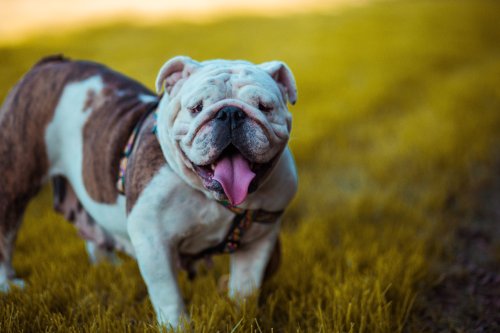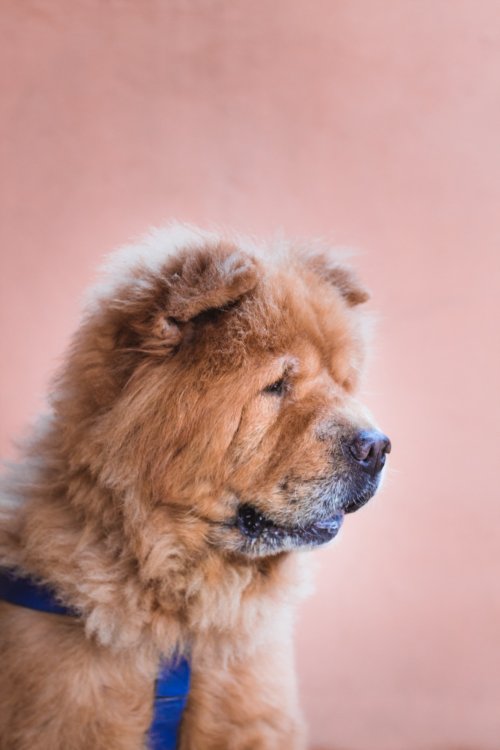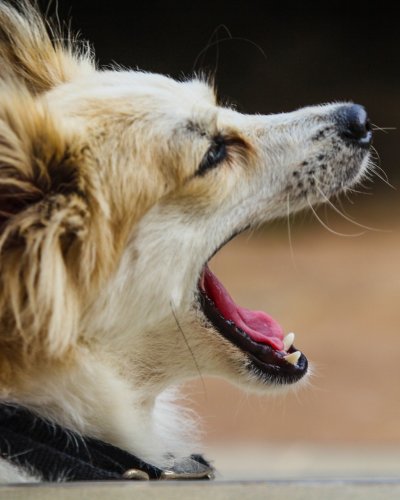Brachycephalic Dog Breeds and their Health
In recent years, brachycephalic dog breeds have been gaining in popularity. For many, their wrinkled muzzles and adorable faces are hard to resist. However, these dogs come with specific characteristics that may compromise their health, so current and prospective owners should be aware.
What Is a Brachycephalic Dog Breed?

Brachycephalic breeds are most easily identified by their short muzzles, which make their faces appear squished and flattened in profile. The name brachycephalic was created by combining the Greek words that mean "short" and "head", which is an apt name for these dogs. Whether intentionally bred for such pronounced features or not, their unusual appearance is sometimes seen as a reflection of owners' wealth or as a status symbol.
Current trends have pushed the initial purchase price of many brachycephalic dog breeds to incredible prices. Prospective owners should budget for thousands more beyond the purchase price, as many of these dogs require surgery to improve their airways and quality of life.
Airway and soft palate issues are common in brachycephalic dogs' because their face contains all the parts that make up the facial structure of a dog; only, in this case, they are compressed into a smaller space, which often causes health problems for these animals.
Examples of Brachycephalic Dog Breeds

Some of the most famous brachycephalic dog breeds are the French Bulldog, Boxer, Bulldog, and Brussels Griffon, or the mischievous and popular Pugs. Some of the largest breeds are the Newfoundland and Bullmastiff, while there's also a smaller lion look-alike called the Chow Chow with a luxurious mane.
The range of breeds within the brachycephalic class is quite vast and also includes the Cavalier King Charles Spaniel, the Japanese Chin, and the Lhasa Apso, originating from Tibet. The chic Boston Terriers, with their handsome tuxedo-like coat, are also brachycephalic. Then there is also the Shih Tzu, originally breed bred to live in royal palaces and the equally confident but usually more opinionated Pekingese.
Why are Humans Attracted to Brachycephalic Breeds?

The American Kennel Club listed two brachycephalic breeds in the USA's top 10 most popular breeds. These are the French Bulldog and the Bulldog. Looking beyond the top ten, there are a total of eight brachycephalic dog breeds within the top thirty. These dogs are popular not only in America but elsewhere in the world. For example, in the United Kingdom, the number of French Bulldogs has increased sixfold in the last few years, and in 2021 they were in the top 3 most popular dogs. These are also some of the most common breeds in Australia.
So, why is it that so many people adore brachycephalic dogs? Many of these dogs have amazing personalities and sweet temperaments, making them great pets that develop strong bonds with their owners. However, it’s not just their personality and temperament that impact how we respond to them; their appearance also plays a big role. Humans have been found to favour the short-faced style; in his study, veterinary specialist Barry Kipperman concluded that the facial appearance of these breeds elicits an emotional reaction in people. Namely, the round eyes, small muzzle, and generally cute appearance often remind people of human infants. Because of this association, these dogs bring out nurturing qualities in people, which—as the numbers show—is enough to want to bring them home and make them a part of their family.
Beyond Cuteness: What Are Humans Not Seeing?

The exaggerated physical features of these breeds are associated with numerous health problems. The impacts of their shortened face can cause respiratory, dental, and other conditions, which are discussed below. These dogs often need specialised veterinary care to improve their quality of life and everyday comfort. The owners, too, should be prepared that their dogs may need daily home care throughout their lives, especially in old age. This can be financially demanding and time-consuming and sometimes require trips to veterinary specialists to get the right treatment for the dog.
Health Issues with Brachycephalic Breeds

Brachycephalic dogs are prone to various diseases; airway issues are so prevalent that there is a syndrome called Brachycephalic Obstructive Airway Syndrome. This is caused by soft tissue within the soft palate obstructing airflow. Since dogs use panting as a primary means to regulate their internal temperature, these dogs, with breathing restrictions, are more prone to overheating injuries.
Due to their shortened muzzle, brachycephalic dogs are also prone to eye diseases and injuries - since the eyes protrude more, leaving them less protected. Spinal malformations and dental issues are also commonly seen within some breeds. There are other health challenges that these breeds face; however, these are the most common, with breathing restrictions being one of the most significant in terms of prevalence and detrimental effects on the quality of life.
Airways: Breathing Problems
Breathing problems arising from their shorted skull can often be heard, with grunting, snorting, and snoring frequently being observed. However, Veterinary specialist Barry Kipperman warns that these sounds are not typical sounds for a dog, nor should they ever be considered normal or endearing. These sounds warn of an impaired breathing capacity and health issues requiring urgent care.
Breathing difficulties, exhibited by; noisy breathing and inability to perform exercises (which may be accompanied by vomiting or overheating), are some classic signs the dog is affected by BOAS. A group of specialists from VCA Animal Hospitals warns that brachycephalic syndrome is also associated with lung and gastrointestinal changes, including bronchial collapse, gastroesophageal reflux, and chronic gastritis.
In addition, brachycephalic breeds very often have a problem with overheating. Breathing is a well-known way of cooling in dogs, and when it is difficult, dogs can have problems at higher temperatures or during any prolonged activity. That's why they need help cooling down during high temperatures (with access to cool water, fans, or air conditioning) and avoiding the summer sun.
Although they are also part of this breed, dogs such as Mastiffs and Newfoundlands have a bit longer muzzles than smaller brachycephalic dogs, which is why breathing problems occur somewhat less frequently to them but are still possible.
Eyes: Brachycephalic Ocular Syndrome

Just as the skull deformities have impacted the dog's ability to breathe, the resulting head shape has caused the eye sockets to become very shallow. Whilst these shallow sockets cause the eyes to appear more prominent, it results in more significant eye protrusion, which increases the risk and likelihood of eye injury, disorders and proptosis occurring – where the eye falls out of its socket – this is a medical emergency and requires immediate veterinarian care.
Brachycephalic ocular syndrome (BOS) is the collective name for eye issues associated with brachycephalic breeds. There is a high prevalence of eye issues resulting from the skull shape and the inability of the dog's eyelids to close entirely over their eyes. Without the ability to maintain the fluid layer over the eye and regulate tear production and dispersion, these dogs are susceptible to dry eyes, ulcers and potential blindness. Excessive facial skin folding too close to the eye can also lead to eye health issues. All this reduces the quality of a dog’s life and can lead to different eye diseases.
Skeletal System: Spinal and Tail Malformations
Some of the most popular dog breeds that fall into this group, such as the British and French Bulldog, Pug, or Boston Terrier, often suffer from spinal malformations. One study showed that the number of dogs suffering from these health problems is as high as 83% in French and British Bulldogs.
Tail malformations, also known as screw tails, are a genetic deformity that causes the number of bones in the bony part of the tail to decrease so that the tail is shorter, and some of the bones even join, making the tail twisted. Such deformations of the final part of the spine can cause major problems with movement, pain in the spine, and urinary or bowel incontinence.
Mouth and Teeth: Dental Problems
Since the skull is narrowed and the gum area inside the mouth is reduced, the teeth (which are still the same number as in other dog breeds) do not have enough space and very often cause dental problems in brachycephalic breeds. Dental disease can appear in young puppies right through to senior dogs. Teeth overcrowding increases the possibility of food and dirt accumulating between the teeth, and there is also the threat of teeth growing into the gums, which can lead to inflammation.
In addition to health problems, the quality of life can also be impaired because brachycephalic breeds are more prone to developing TMJ (temporomandibular joint) issues. The TMJs connect the lower jawbone to the skull and assist in movements such as chewing, barking, or playing. Pain or dysfunction in this joint can cause issues that negatively affect the dog's overall well-being. Small-statured dogs with short muzzles are particularly prone to TMJ issues since they need to open their mouths more widely to eat, breathe and play tug games. The article " The Biomechanics of Tug " discusses the importance of selecting an appropriate tug for dogs, especially those with short faces. The owners of brachycephalic breeds should pay particular attention during play to avoid harming their dogs.
Keeping Your Brachycephalic Dog in Optimum Health

These types of specially bred dogs also require special care to maintain their health in an optimal state. Regular health checks with your veterinarian and regular exercise according to an adapted regimen are vital for these animals' well-being. In addition, to keeping them fit, manual therapy is commonly used to reduce pain, increase mobility, and keep the body functioning well.
Regular Health Checks
To avoid serious health problems, owners of brachycephalic breeds should regularly visit the veterinarian and carry out preventive examinations. This especially applies to examinations of the respiratory system, the dental condition of the dog, and potential ocular problems. Veterinary assistance is paramount when owners already notice some of the signs that may indicate the development of the above-mentioned diseases. Thermal imaging can be a great first step to detecting early signs of dysfunction and potential areas of pain, be sure to ask your therapist if they offer thermal imaging wellness checks.
Nadia Crighton from Pet Insurance Australia explains that not all brachycephalic dogs will need surgery immediately. However, owners still need to be proactive in the early detection of complications or dysfunctions to avoid major complications.
Exercising your Brachycephalic Dog
It's of vital importance that brachycephalic dogs don't become obese. In addition to the already mentioned problems with breathing and difficult regulation of body temperature, obesity further complicates these conditions and can significantly worsen the dog's health.
Maintaining a healthy weight for these popular dogs can be more complicated since they also struggle to withstand exercise. That is why exercise should be approached cautiously, often with a modified routine, and always at a pleasant to cool outside temperature to avoid overheating—summer outings during the day are far from desirable for these dogs. Although activities should certainly be carried out, at the same time, the owners should observe if the dog has breathing problems and stop in time to avoid fatigue. Games that engage the mind and a bit less the body go a long way with these breeds.
Therapy for Brachycephalic dog breeds
When the health of brachycephalic breeds is impaired to the extent that it endangers the animal's life, surgery will likely be necessary. Vets are skilled at alleviating some of the problems stemming from pronounced anatomical abnormalities through surgical intervention. Typical surgeries for these breeds are often implemented to facilitate breathing and improve airflow through the nostrils. However, regular examinations and treatments related to other potential health threats (jaw, ocular, and spine treatments) can improve and extend the dog's lifespan.
If you are considering welcoming a brachycephalic dog into your family, be sure to research dog breeders, ensure they are breeding for health and conduct the necessary genetic and health screening tests. Owners and breeders should take a responsible approach to help improve the lives of brachycephalic breeds.





Leave a comment